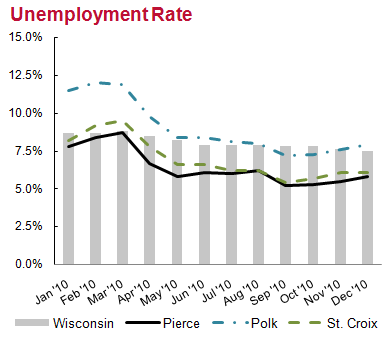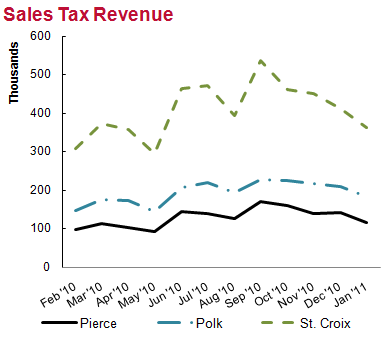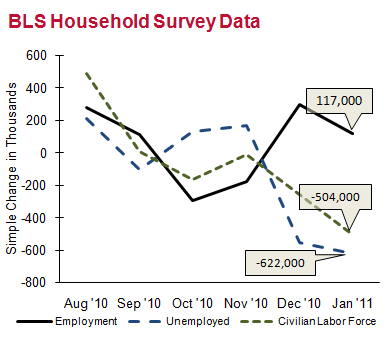The UW- River Falls Center for Economic Research (CER) in partnership with St. Croix Economic Development Corporation (SCEDC) has released the February edition of the St. Croix Valley Economic Dashboard. The dashboard presents a snapshot of the economic condition of the labor, consumer and housing markets in the three county area. It presents the latest available data in one convenient package and can be viewed on the CER’s website at www.uwrf.edu/cer.
The latest labor market data indicates continued slow recovery. The unemployment rate fell in December as compared to December 2009 in all three counties, while both labor force and total employment increased relative to the previous year. The most encouraging statistic is the labor force. As the Labor market continues to recover, we should expect to see discouraged workers, workers who have given-up on trying to find a job, resume their job search.

The consumer market is showing signs of growth as well. County sales tax revenue collected in January 2011 increased as compared to one year ago for all three counties. Moreover, new vehicle registration for January 2011 is up from last year. Both indicators are signaling an increasing willingness on the part of the consumer to spend.


The housing market, however, is still struggling. Median home price fell in January for three counties as compared to January 2010, but the number of homes sold increased year over year in Polk and St. Croix counties. The local housing market statistic appear to be consistent with the national housing market situation, and is still coping with a large inventory and lower availability of mortgage lending.

St. Croix, Polk, and Pierce counties comprise Wisconsin’s St. Croix Valley. All three counties are located along the Wisconsin-Minnesota border. Two of the three counties, St. Croix and Pierce, are included in the Minneapolis-St. Paul-Bloomington MN-WI metropolitan area, a 13-county region with of population of 3.25 million residents. For additional information on the February edition of the St. Croix Valley Economic Dashboard, contact Dr. Logan Kelly at cer@uwrf.edu or (715) 425-4993 or William Rubin at bill@stcroixedc.com or (715) 381-4383.
